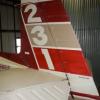Cold Temperature Restricted Airports
-
Members Online
- bixmooney
- eman1200
- exM20K
- 1980Mooney
- jeremyc209
- 47U
- varlajo
- M20F
- Jsno
- ta2too
- outermarker
- kortopates
- flying_nun
- TBILL
- 1967 427
- Guilly
- Rich
- toto
- MB65E
- Alan Fox
- takair
- ohdub
- Kelpro999
- EKoS
- PeytonM
- CCAS
- shawnd
- neilpilot
- 303mooney
- spaceman39a
- mooneyfun
- Marc_B
- OSUAV8TER
- Ibra
- 7.Mooney.Driver.0
- DCarlton
- good2eat
- Danb
- Obsession2
- georgewdean1020
- Airways
- donkaye


Recommended Posts
Join the conversation
You can post now and register later. If you have an account, sign in now to post with your account.